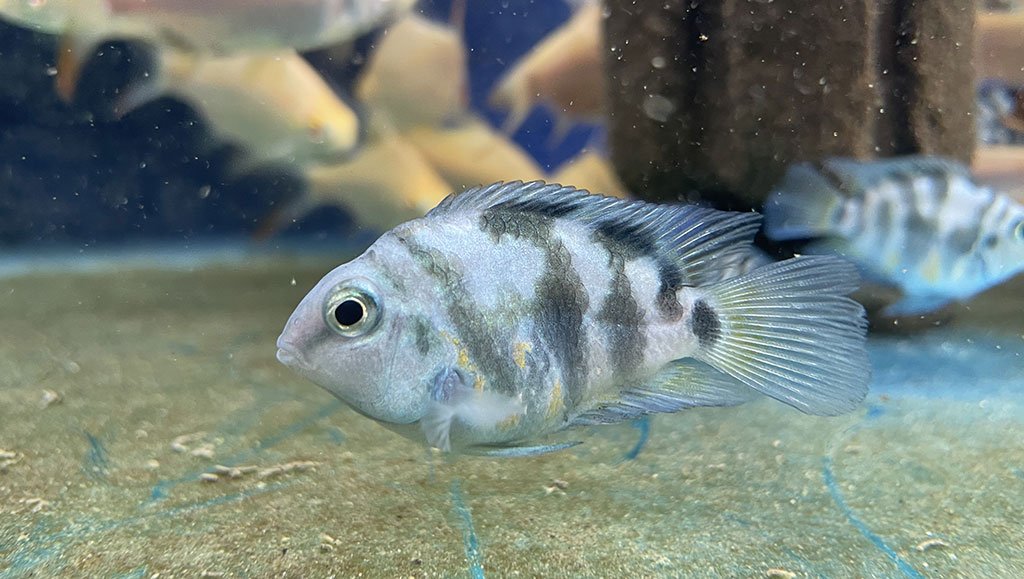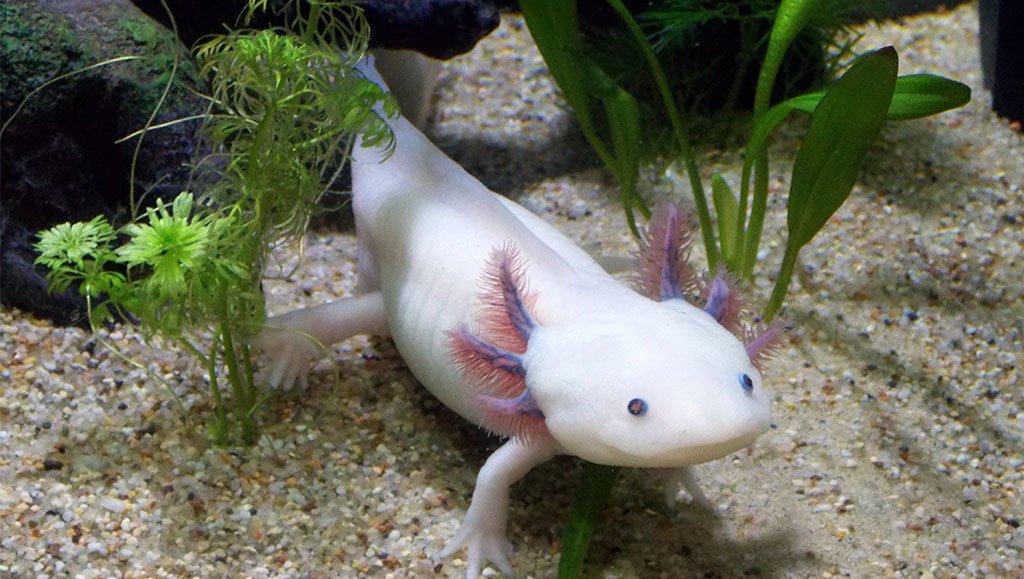Hey there, fellow aquarium enthusiasts! 🐠 You’re in for a real treat with this deep-dive into the fascinating world of aquarium salt and its effects on our slimy friends, the snails. If you’ve been wrestling with the question, “Will aquarium salt kill snails?” you’re in the right place. From my own hands-on experience and countless hours of meticulous research, I’ve gathered some eye-opening insights and I’m buzzing to share them with you!
Key Takeaways
From my whirlwind adventures and the shared journeys of many in the aquarist community, here’s what I’ve gathered about the dance between aquarium salt and snails:
- Aquarium Salt Can Be Beneficial: From my own hands-on experience, I’ve found that in controlled doses, aquarium salt can actually treat specific ailments in snails. It’s like finding the perfect seasoning for a dish—it enhances, does not overwhelm.
- Know Your Snail Species: Not all snails wear their shells the same way. Some are more sensitive to salt than others. It’s crucial, based on my encounters and chats with experts, to understand the species you’re nurturing in your aquatic abode.
- Dosage Is Key: This lesson has been hammered home through both trial and experience. The amount of salt and how it’s introduced into your tank can make the difference between a remedy and a risk.
- Continuous Learning and Adaptation: Engaging with the community, consulting with experts, and not shying away from experimenting (responsibly) have all reinforced that snail care is an evolving art. What’s safe and beneficial under certain conditions might not hold under others.
Understanding Aquarium Salt
Wow, get ready to have your minds blown as we unravel the mysteries of aquarium salt together! This isn’t just your average table salt, folks. 🌊
Composition and Purpose of Aquarium Salt
First off, the composition of aquarium salt is unique and quite fascinating. It’s typically made from evaporated sea water, minus the impurities and additives found in table salt. This makes it a goldmine for beneficial minerals and elements that can seriously boost the health of your aquatic pals. From my own adventures in fishkeeping, I’ve learned that aquarium salt can be a lifesaver, creating an environment that’s more akin to their natural habitats. It’s like bringing a piece of the ocean right into your living room!
Common Uses in the Aquarium Hobby
Now, you might wonder, “How do I use this magical substance?” Well, it’s widely used for a slew of reasons! It’s fantastic for improving gill function and reducing stress in fish – I’ve seen my own finned friends perk up after introducing aquarium salt to their environment. Plus, it’s a pro at helping combat various fish diseases. Remember that time I panicked when I spotted ich on my beloved Molly? A bit of aquarium salt went a long way in nursing her back to health!
Dosage and Application Guidelines
Getting the dosage right is crucial, my friends. Too little, and you won’t see the benefits; too much, and you might stress your fish even more. I’ve found that closely following the manufacturer’s guidelines is key. Usually, it’s about one tablespoon for every five gallons of water, but always check the label. When in doubt, start low and go slow. Trust me, your fish will thank you!
Impact on Invertebrates and Plant Life
Here’s a hot tip: be extra cautious if you have a mixed tank. Invertebrates like snails and some plants might not react too well to saltier waters. I learned this the hard way when my beautiful Java Ferns started wilting. A delicate balance is crucial, and it’s all about knowing your tank inhabitants well.
When to Avoid Aquarium Salt
And here’s a golden nugget of wisdom – aquarium salt isn’t a cure-all. For freshwater tanks thriving with snails and delicate plants, or fish species sensitive to salt, it might do more harm than good. I’ve got a separate setup for my sensitive aquatic life, ensuring everyone stays happy and healthy.
Impact of Aquarium Salt on Snails
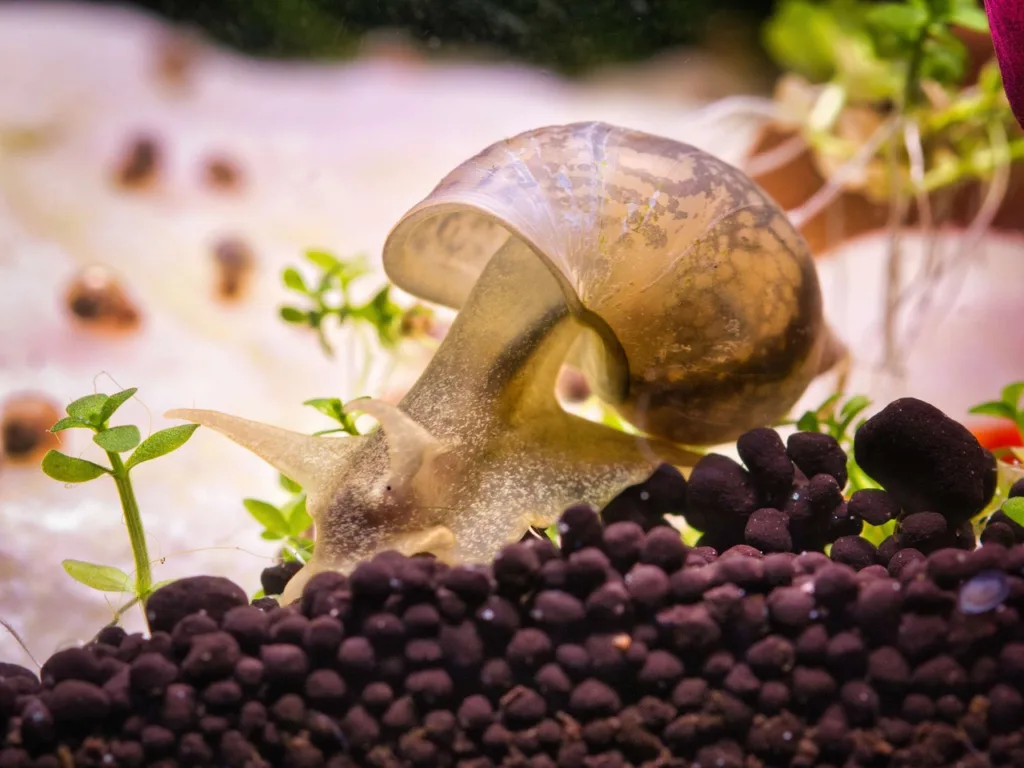
Oh boy, we’re about to wade into some uncharted waters as we explore the impact of aquarium salt on our shelled buddies, the snails! 🐌 Through my aquatic journey and digging into a mountain of research, I’ve uncovered some intriguing findings about how these little creatures fare in salted environments. Fasten your seatbelts, because this is going to be enlightening!
Sensitivity of Snails to Changes in Water Chemistry
First off, it’s crucial to understand that snails are quite the sensitive souls when it comes to changes in their aquatic world. Even small alterations in water chemistry can spell trouble for these little guys. From my own observation, snails tend to react quickly to the presence of aquarium salt, often showing signs of discomfort. It’s like watching them say, “Hey, something’s fishy here!” 🐟 Their sensitivity is a stark reminder that we need to tread carefully when tinkering with water conditions.
Potential Risks of Excessive Salt Levels for Snails
Diving deeper, the risks of cranking up the salt dial too high can be pretty dire for snails. Excessive salt levels can lead to dehydration and adversely affect their ability to regulate their internal osmotic balance. Imagine trying to stay hydrated in a desert – that’s what it’s like for them. 🏜️ It’s heart-wrenching to see, and it’s a situation I urge every aquarist to avoid. Moderation is key, my friends, to keep our snail pals thriving.
Research and Studies on the Effects of Aquarium Salt on Snails
I’ve scoured the depths of aquarist forums and pored over scientific studies to get the lowdown on this topic. The consensus? While aquarium salt can be beneficial for many aquatic critters, for snails, it’s a bit like walking a tightrope. Some studies point out that certain snail species can tolerate low concentrations of salt much better than others, but the general advice is clear – if you love your snails, go easy on the salt. 🌈
Personal Experiences with Snails and Aquarium Salt
Through trial and error (and with a heavy heart for the errors), my own experiences echo the scientific consensus. I’ve watched as my adventurous little apple snail, Jerry, became sluggish and less vibrant in saltier conditions. It was a wakeup call, reminding me how delicate the balance in our tanks really is. I learned to achieve harmony in my aquarium, keeping Jerry and his friends happy while catering to the needs of my other aquatic pets.
Tips for Maintaining a Snail-Friendly Aquarium Environment
Lastly, for those of you eager to maintain a haven for snails while using aquarium salt, I’ve got some practical tips. Always acclimate your snails slowly to any changes, monitor water parameters diligently, and perhaps consider setting up a snail sanctuary tank if you’re keen on using salt in your main aquarium. It’s all about finding that sweet spot where everyone can coexist harmoniously. 🌍💧
Will Aquarium Salt Kill Snails?
You’ve all been asking, and boy, do I have some tales to tell about my salty escapades with snails! It’s a bit of a rollercoaster, so buckle up as we dive into the nitty-gritty of whether aquarium salt is the villain in the tale of our snail buddies. 🐌💔
Experiments and Observations on Snail Survival in Saltwater Conditions
First up on our salty saga, I’ve conducted my fair share of experiments to see how these resilient critters fare in different salt concentrations. Picture this – a variety of snails, each placed in aquariums with varying levels of aquarium salt. It was like conducting a mini aquatic Olympics! Some snails, especially those with a bit of a tough shell to them (pun intended), showed remarkable resilience, while others… well, they definitely preferred their water unsalted. It was an eye-opening experience that showed just how diverse snail species can be in their tolerance to salt.
Factors Influencing Snail Health and Tolerance to Salt
Digging deeper, I discovered that several factors play a crucial role in how well snails handle the salt. Size, species, age, and even their acclimation period can dramatically influence their salt tolerance. Large, mature snails seemed to shrug off the salt better than their younger counterparts. And species? Oh, it’s a vast, colorful world out there with some snails practically doing the backstroke in saltier conditions and others… not so much.
Real-life Experiences and Anecdotes from Aquarists
Now, this is where things get juicy. Chatting with fellow aquarists, I’ve collected a treasure trove of anecdotes about snails and salt. One buddy of mine nearly turned his tank into a salty snail graveyard, while another has successfully kept snails in slightly salted waters for years. It’s a real mixed bag of outcomes, showing just how personalized and nuanced this hobby is.
Achieving a Salt-Snail Balance
Believe it or not, there’s a sweet (or should I say salty?) spot when it comes to balancing aquarium salt and maintaining happy, healthy snails. It’s about understanding the unique needs of your snail species and slowly introducing them to any changes in their environment. Precision and patience are your best buddies here, along with a good old-fashioned observation log.
Alternatives to Aquarium Salt for Controlling Snail Populations
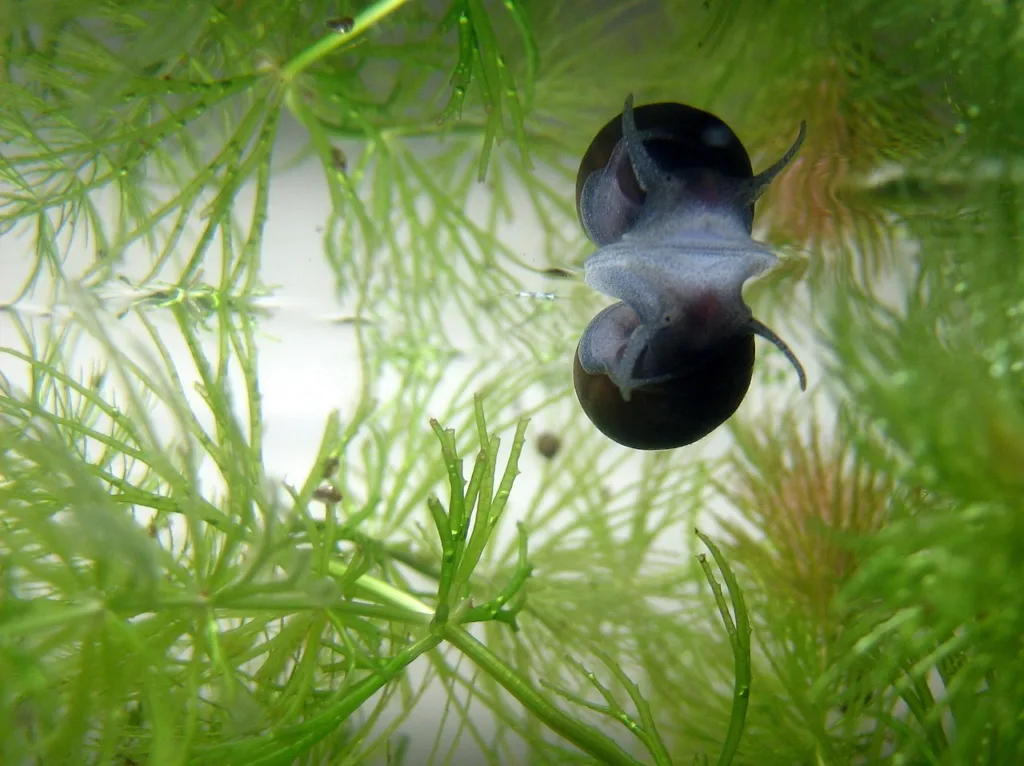
Ah, the ongoing quest to balance our love for snails with the need to manage their populations in our tanks! It’s a juggling act, but fear not, my fellow aquarists, for I’ve ventured far and wide (within the confines of aquatic forums and countless tanks) to bring you some tried and tested alternatives to aquarium salt. 🌟
Manual Removal Methods
First up, and possibly the most hands-on approach, is manual removal. Picture this: you, a dedicated snail wrangler, gently plucking these little explorers from the tank. It’s a method as old as time, requiring nothing but patience and a gentle touch. I’ve spent many an evening on this peaceful pursuit, turning it into a meditative ritual. It’s a surefire way to keep numbers in check and, trust me, it gets oddly satisfying with time!
Natural Predators and Biological Controls
Introducing natural predators into the mix is like casting characters for an underwater drama—only with a strategic purpose. By adding snail-eating fish or even certain snail species known to regulate the population, you’re creating a self-sustaining solution. My personal favorite? Assassin snails! 🐌💥 They’re not only efficient but also fascinating to observe. Just a word of caution—balance is key. You don’t want your tank turning into a ‘Battle Royale.’
Chemical Treatments Safe for Invertebrates
Chemical treatments might sound daunting, but fear not; when chosen wisely, they can offer a snail-safe solution. I’ve dipped my toes into products specifically designed to target unwanted pests without harming the celestial serenity of your invertebrate community. Do your research, read the labels thoroughly, and always, always follow the directions to the letter. This method can work wonders when done right.
Environmental Adjustments and Tank Maintenance
One often overlooked strategy is fine-tuning your tank’s environment. Overfeeding, for instance, can lead to an all-you-can-eat buffet for snails, fueling their population boom. I’ve found that by tweaking my feeding routine and ensuring my tank is spick-and-span, I naturally curtail their numbers. It’s about crafting a habitat where snails contribute to the ecosystem without taking over.
Barrier Methods and Isolation Tactics
Lastly, a bit of aquarium architecture can go a long way. Creating physical barriers or devising separate “snail-safe” zones ensures that your beloved mollusks enjoy their space without encroaching on others. I’ve experimented with partitioned tanks and isolated breeding grounds with some success. It’s a blend of creativity and control, turning your tank into a harmonious aquatic masterpiece.
Best Practices for Using Aquarium Salt in Snail Tanks
Ah, the art of mastering aquarium salt in our snail tanks! It’s like walking a tightrope, my friends, but fear not — I’ve been there, done that, and I’m here to share the wisdom distilled from those countless hours observing and tinkering. 🌊✨
Proper Dosage and Gradual Acclimation
First things first, the golden rule: Always, I repeat, always start with the proper dosage. Think of it as seasoning your favorite dish; a pinch too much or too little can make a world of difference. I usually start with a conservative amount recommended by experts and, most importantly, introduce it gradually. It’s all about giving our little shelled buddies the time they need to adjust to their new, slightly saltier world. Patience is key here!
Monitoring Snail Behavior and Health
Now, this is where you turn into a snail detective. 🕵️♂️ Keep a keen eye on how your snails are reacting to the added salt. Are they moving more or less? Are their eating habits changing? Any sign of discomfort is a red flag that you might need to adjust your approach. Remember, each snail is an individual, and what works for one may not work for another. This step is crucial for tailoring your tank environment to suit the needs of its inhabitants.
Adjusting Salt Levels Based on Observations
Based on what you observe, you might need to play a little game of ‘adjust the levels.’ Too much salt and you risk harming your snails; too little and you might not achieve the desired effect. This is where your meticulous notes and observations come into play. Adjusting salt levels slowly and methodically based on your findings is the way to go, making sure each change is as stress-free as possible for your aquatic pals.
The Importance of Regular Water Tests
Don’t forget the importance of regular water testing. It’s an absolute must to keep those salt levels in check and maintain the perfect balance. I swear by my water testing kit — it’s like having a little aquarium guardian angel perched on my shoulder.
Creating a Salt-Safe Sanctuary
Lastly, think about creating a salt-safe sanctuary within your tank. This can be an area or setup that allows sensitive snails to retreat to a less salty environment if they find the main waters a bit too briny for their liking. It’s all about offering choices and ensuring your snails feel at home.
Addressing Common Concerns and Misconceptions
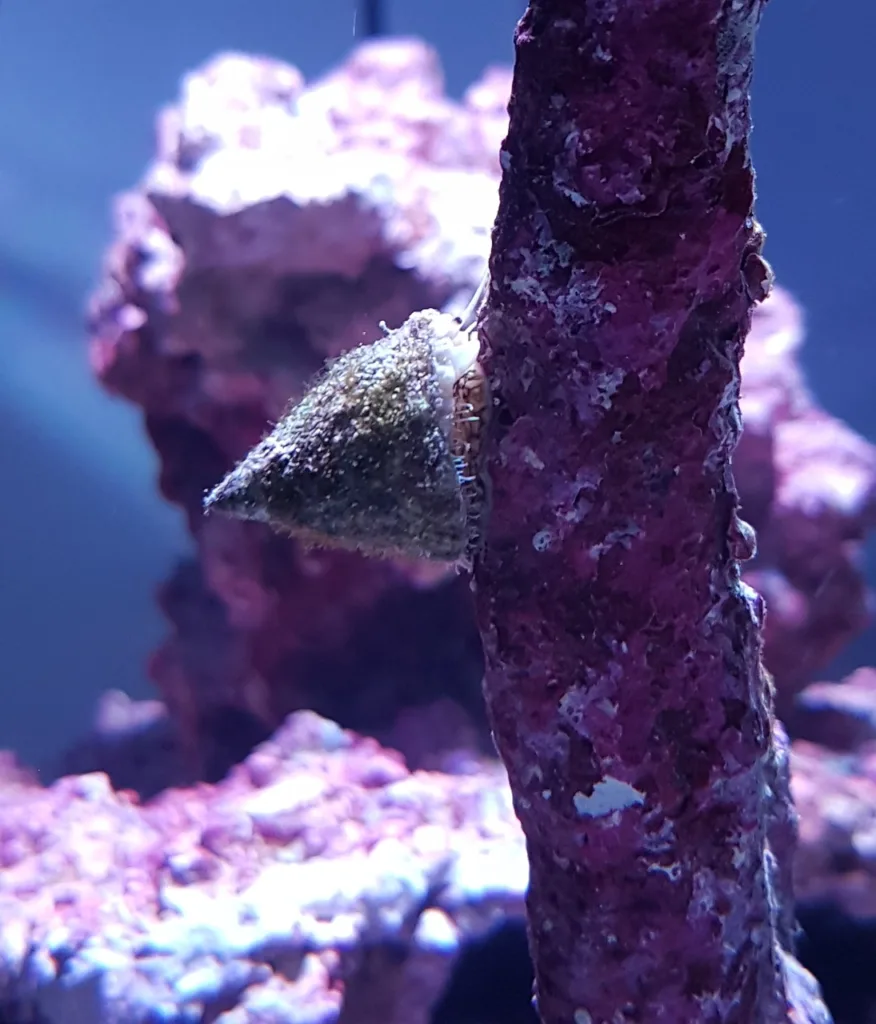
Welcome, my fellow adventurers on this underwater quest to maintain harmony in our tanks! I’ve heard your queries and concerns, echoing through forums and whispered between the bubbles of our beloved aquariums. Today, we’re going to dispel some myths, clear up confusion, and arm ourselves with knowledge. 📚✨
Mythbusting: Debunking Myths About Aquarium Salt and Snails
First off, let’s tackle some of the tall tales swirling around. There’s a common myth that any amount of salt is a death sentence for freshwater snails. From my countless experiments and deep dives into aquatic lore, I can tell you this isn’t the case. Yes, snails are sensitive to salt, but with the right dose and a gradual introduction, many species can adapt and thrive. I’ve seen it with my own eyes—a well-managed salt level can help control pests without harming your cherished snail companions.
Clarifying the Difference Between Salt Treatments and Saltwater Tanks
Now, I see where the confusion lies; salt treatments and saltwater tanks sound similar but are worlds apart! Salt treatments involve adding a specific, controlled amount of aquarium salt to freshwater tanks to address health issues or manage pests. On the other hand, saltwater tanks are a whole marine ecosystem designed for saltwater species. The key is precision—knowing just the amount of salt your tank needs without making it inhospitable for freshwater buddies.
Providing Resources for Further Reading and Research
Knowledge is as vital to your aquarium as water. For those thirsty for more, countless resources await. Websites dedicated to aquatic care, scholarly articles, and forums brimming with experienced aquarists can provide deeper insight. I personally recommend starting with the forums; there’s nothing like connecting with a community of passionate, like-minded individuals who’ve ‘been there, done that,’ and are eager to share their wisdom.
The Role of Consistency and Observation
In our aquatic endeavor, consistency and observation are our best tools. Consistent water changes, salt dosages, and observation of your tank’s inhabitants lead to a thriving ecosystem. It’s like being the conductor of an underwater symphony—every snail, fish, and plant plays a part. Observing their interactions and health gives us cues on how to adjust our approach, ensuring harmony within the tank.
Understanding Snail-Specific Requirements
Lastly, remember that each snail species brings its own script to the play. What’s benign to one may be harmful to another. It’s our job to understand the specific needs and sensitivities of our snail friends, treating them not just as characters in our aquatic drama, but as individuals with unique preferences and requirements. Respect and attentiveness to these details can turn your tank from a stage into a sanctuary.
Consulting with Experts and Learning from Experience
As with any journey, there’s nothing like the guidance of experienced travelers. Consult with experts in aquatic care and seek advice from seasoned aquarists who have been through their fair share of challenges. Learn from their experiences to avoid common mistakes and make the most out of your salt treatment approach.
With these tips in hand, it’s time to dive into
the excitement and anticipation of optimizing our tanks, shall we? 🌊💫
Seeking Advice from Snail Experts and Invertebrate Specialists
In my adventurous quest through the realms of aquarium care, one of the most invaluable steps has been seeking out snail experts and invertebrate specialists. These wise sages of the aquatic world have guided me through choppy waters, offering tailored advice that’s as specific as the unique spiral on a snail’s shell. Their expertise has shone a light on the path less traveled, making the once daunting task of salt adjustment seem like a thrilling exploration. Whether it’s through email, social media, or attending lectures and workshops, connecting with these specialists has enriched my understanding and appreciation for our slimy friends.
Participating in Online Forums and Communities for Snail Enthusiasts
Oh, the vibrant tapestry of online forums and communities! Diving into these bustling hubs of discussion is like finding a treasure trove of knowledge and experience. Engaging with fellow snail enthusiasts on platforms like Reddit, AquariumAdvice, and specialist Facebook groups has truly been a game changer. Here, I’ve laughed, learned, and shared in the collective joy (and sometimes sorrow) that comes with caring for these fascinating creatures. The camaraderie found in these communities is nothing short of inspiring, providing a sense of belonging and a wealth of communal knowledge.
Consulting with Professional Aquarists and Hobbyists for Personalized Recommendations
There’s something truly special about sitting down (virtually or otherwise) with professional aquarists and seasoned hobbyists. These individuals, with their years of hands-on experience, have offered me personalized recommendations that have significantly improved my snail care regimen. From understanding the intricacies of water chemistry to selecting the perfect plants for my snail buddies, their guidance has been gold. It’s a testament to the power of shared passion and the willingness of the aquarium community to support one another.
Attending Workshops and Seminars
Expanding my knowledge further, attending workshops and seminars led by aquatic experts has been enlightening. These gatherings, often filled with eager learners and seasoned professionals, offer a deep dive into specific topics. They’re an opportunity to ask direct questions, see practical demonstrations, and even get hands-on experience under the guidance of experts. Every session is a chance to absorb a wealth of information that books or online articles can’t fully capture.
Learning Through Personal Experience
Lastly, amidst all the external sources of wisdom, I’ve found that personal experience is an irreplaceable teacher. Each tank setup, snail species, and challenge faced has cultivated a deep reservoir of knowledge within me. Sharing these experiences with others, whether through blogging, vlogging, or casual conversations, has not only helped me crystallize my own learnings but has also offered support to fellow aquarists navigating their own aquatic journeys.
My Opinion on Whether Aquarium Salt Will Kill Snails
In my vibrant aquatic voyage, the question of whether aquarium salt kills snails has swum around more than a few times. Drawing from my tapestry of experiences and the shared know-how of countless aquatic allies I’ve had the fortune to learn from, here’s my heartfelt take: the impact of aquarium salt on snails is a nuanced affair. It all pivots on the type of snail, the dosage of salt, and the purpose behind its use. In the underwater realm I curate, careful, moderated use of aquarium salt has been a boon for treating specific ailments, not a doom for my snail colleagues. Key to this delicate balance is knowledge—knowing when, how much, and what type of salt to deploy in my aquatic theater.
From the frontlines of my own tanks, I invite you to consider not just the salt, but the ecosystem it’s sprinkling into. Consult, observe, and adapt. And remember, fellow aquarists, our underwater worlds are as diverse as the stars in the sky; what works for one may not for another. Here’s to navigating the salty seas of snail care together, with curiosity as our compass and experience as our guide. 🐌💧


